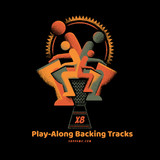The Magic of the Drum Roll
If you ask a group of drummers the best way to learn how to play a drum roll, you will likely get a wide range of answers based upon the drummer’s experience, the type of drum roll and maybe even the different hand and wrist techniques used to roll on a snare drum. There will be talk of rudiments, of paradiddles, of the single stroke or buzz roll. The drum roll is an art that, for the uninitiated, may seem a paramount drumming move, the apex of rhythm: the most awesome part of drumming. For the drummer, that seamless beat is simply how we roll.
While there are many techniques involved with the drum roll, there is also the knowledge of knowing just when the roll is best played. A snare drum roll can be played to increase the excitement in a rhythm, or, to sustain the momentum between phrases and grooves. Drum rolls can announce the presence of a drummer, the beginning of a song or a set, or end a song on an energized and excited beat. Understanding the power of the drum roll is essential and just as important as knowing how to play one (or one of the different drum roll styles), and that understanding helps define the drummers personal flair.
Drum rolls are just as important to understand as drum solos, fills and grooves, especially when it comes to driving the emotional connection between music and the audience. For the beginner drummer, these rhythmic concepts are necessary to not only understand on a fundamental level, but, they are truly the means to develop a memorable drumming style, as well. Drum rolls may add interest and enthusiasm to the music, but it is the drummer’s image that may ultimately benefit the most from these mystical drumming techniques.
Recent Posts
-
X8 Drums Play-Along Backing Tracks
The new X8 Play-Along Series is being produced for our musician friends wanting a fresh way to work …9th Feb 2025 -
What is the Best Size Djembe for Beginners?
If you're new to the world of percussion and interested in learning the djembe, you're in for a t …16th Jul 2024 -
The Benefits of Becoming a Drumming Teacher: Transforming Passion into Profession
Why become a drumming teacher? Becoming a drumming teacher is an excellent way to share your pas …22nd May 2024



